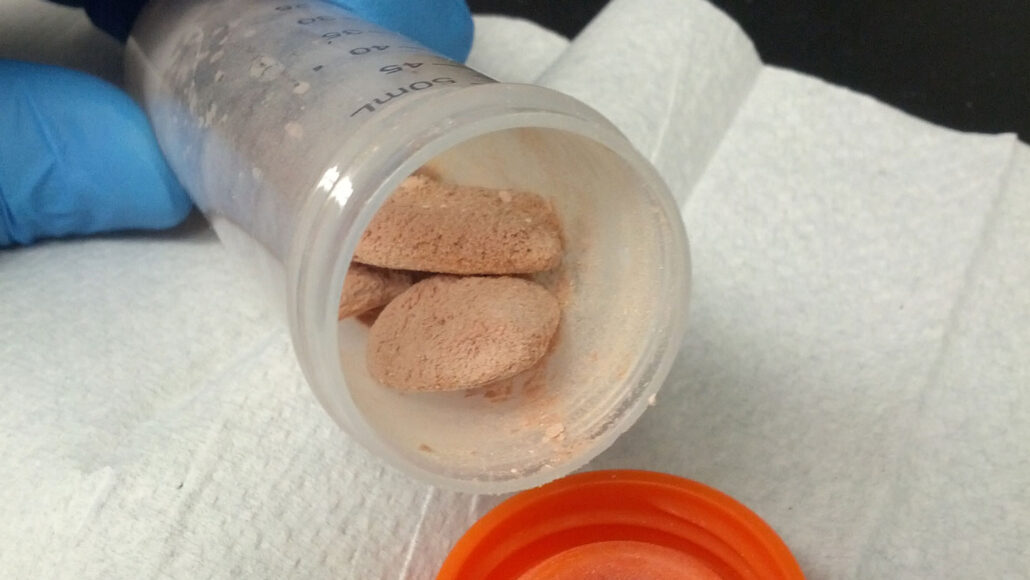Questions for ‘Recycling a climate-warming gas could make ‘greener’ farmed fish’

Researchers proposed a low-cost way to turn methane into fish feed, such as the pellets shown here.
Jaewook Myung
To accompany ‘Recycling a climate-warming gas could make ‘greener’ farmed fish’
SCIENCE
Before Reading:
- What do you think of when you think of bacteria? What are some ways bacteria harm people? What are some ways bacteria can help people? (If you aren’t sure, do a quick internet search.) What types of things might bacteria eat?
- What is a greenhouse? Regarding plant growth, why is it critical that sunlight gets inside greenhouses? The inside of a greenhouse is usually warmer than the outside temperature. Why might that be? Now consider the term “greenhouse gases.” How do you think greenhouse gases get their name? What effect might they have on our climate?
- As a class, come up with a list of greenhouse gases. Identify some human activities that produce more greenhouse gases. How might these gases be removed from our atmosphere?
During Reading:
- What are the researchers in this study trying to make from methane?
- List three sources of methane pollution. As a greenhouse gas, which is worse, methane or carbon dioxide?
- What does it mean to “flare” methane gas? Why don’t most companies “flare” rather than capture their unused methane emissions?
- What does Sahar El Abbadi plan to do with the bacteria she grows after these microbes have feasted on methane? What type of living thing is a methanotroph?
- What was the “first step” in the Stanford researchers’ experiment? Using the special container described in this study, how quickly can methanotrophs double in population size?
- Why does Marina Kalyuzhnaya suggest that the “Stanford technique” be performed on a large scale?
After Reading:
- In your opinion, how valuable is this kind of technology? Cite a finding from this article to support your answer. Besides fish, what other animals could potentially eat bacteria-based food?
- Imagine you’re a scientist who helped develop the bacteria-based fish food that you just read about. But when these fish went to market, some people refused to buy the fish. These fish ate fish food made from bacteria, which worried these people. What misunderstandings might these people have that could cause them to fear eating these fish? If you were the scientist, what might you say to these people to help them better understand the safety of those fish?